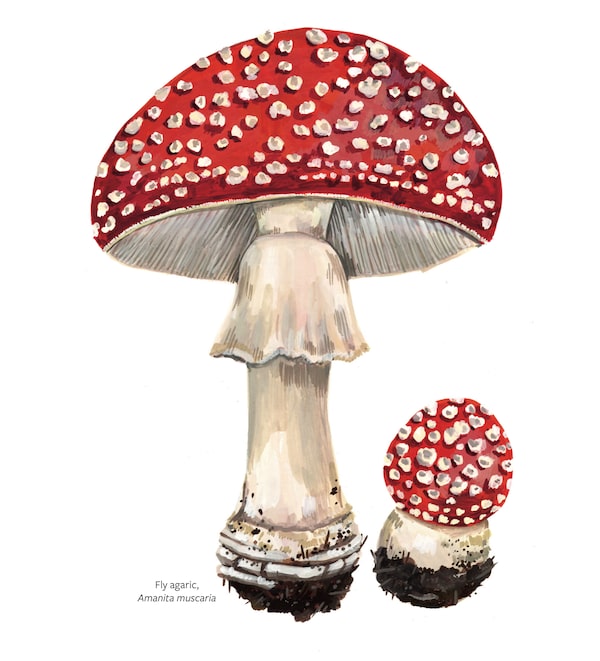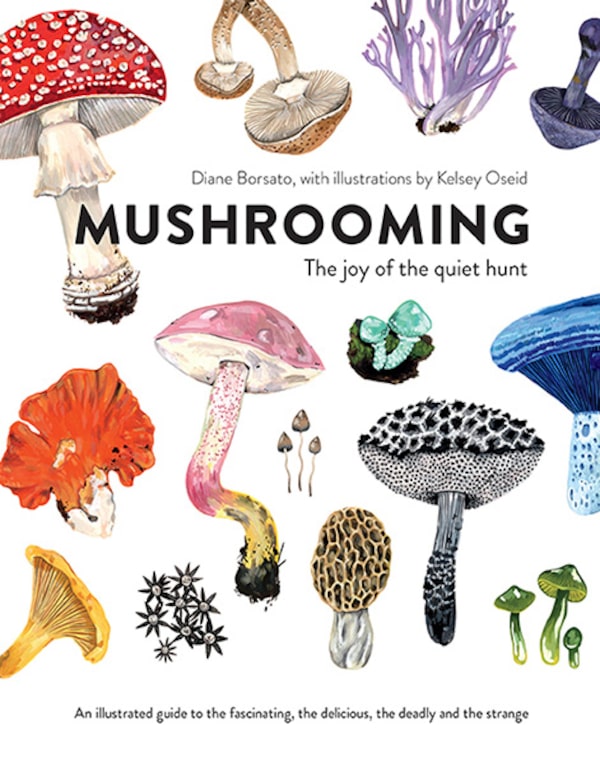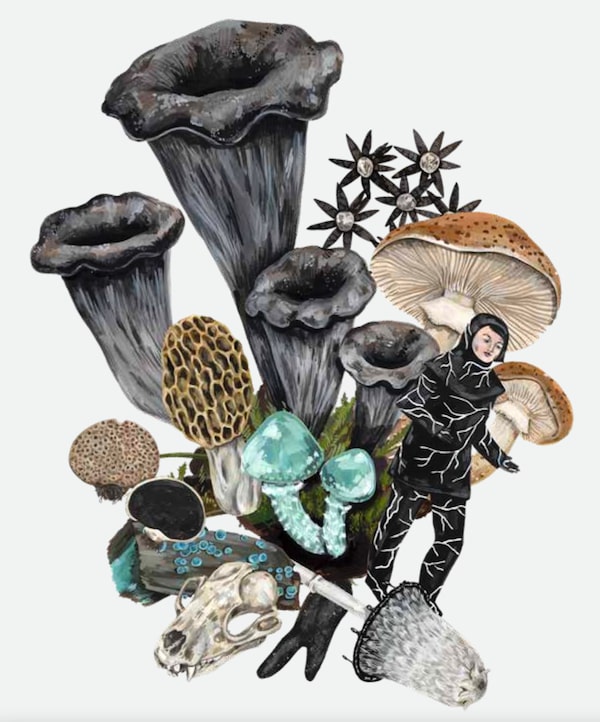Anna Comfort O’Keeffe was already a mushroomer before COVID-19 hit. And as she foraged around British Columbia during the pandemic, she began to notice she had some new company. With travel ground to a halt, more people had begun to explore their own extended backyards, pulling up to the woods in their Subarus, guidebooks in hand, ready to hunt for friendly fungi.

Illustration from Mushrooming: The Joy of the Quiet Hunt.Handout
So when Toronto-based artist and professor Diane Borsato approached her with the idea to put together an illustrated guide to chanterelles, puffballs, truffles and their ilk, the idea seemed ripe for the picking to Comfort O’Keeffe – publisher of the independent publishing house Douglas & McIntyre.
A mushroomaissance may be upon us. Publishers and retailers across the country can’t stop selling books about them. “Along with sourdough bread making and bird watching, mushroom hunting became a real passion with people,” says Michael Hamm, manager at Bookmark in Halifax.
That passion certainly worked out for Borsato. Her 2022 book Mushrooming: The Joy of the Quiet Hunt, with illustrations by Kelsey Oseid, sold as many copies in three months as Comfort O’Keeffe had assumed would take a year, and another publisher has bought U.S. rights.
“The timing has been really good for interest in this kind of outside activity,” says Comfort O’Keeffe, who has also noticed a broader interest in books about nature. “It’s being emphasized more in schools, as we become more aware of climate change and more attuned with the natural world and the importance of it.”

Mushrooming: The Joy of the Quiet Hunt, by Diane Borsato, ill. Kelsey Oseid.Handout
Mushrooming, which celebrates more than 120 different kinds of the fungi through stories and art, takes a different tack than a traditional field guide. For one, Borsato isn’t a mycologist – she’s an artist. So the book explores not just individual mushrooms, but contemporary art and projects that embrace them, such as Jae Rhim Lee’s Infinity Burial Suits, in which fabric-embedded mushrooms are said to carry nutrients from a person’s body to nearby plants upon their death. (The actor Luke Perry was reportedly buried in one.)
“It’s not straight science,” Borsato says. “I was interested in the aesthetics and culture around mushrooms, and making a guide that was contemporary and feminist – and reflecting on some of the crucial discourses we’re having right now around our relationships with nature and the environment and land.”
Published in September, Mushrooming was a hit at Bookmark over the holidays, though Hamm says that Timothy J. Baroni’s 2017 field guide Mushrooms of the Northeastern United States and Eastern Canada had already been a big seller for a couple of years. That’s on top of the National Audubon Society’s field guides and the Peterson Field Guide to Mushrooms of North America.
“At one point, gosh, we had in our nature section probably a shelf and a half just for mushrooms,” Hamm says. “It’s the type of topic that doesn’t really have any age restrictions or gender-based buying patterns. I mean, they just appeal to everybody.”
Mika Bareket says mushrooms have been “the number one trend” since reopening her Good Egg bookstore in Toronto a year and a half ago after closing in 2018. “We did a mushroom window and people came in just so delighted.”
The rise of illustrated mushroom books such as Borsato’s has helped expand the market for titles that go beyond the scientific, embracing the fun and aesthetics of the fungi family. Elise Gravel’s The Mushroom Fan Club is one example that’s brought children into the fold, Bareket says. “I’m noticing that kids are interested in mushrooms as well as grandparents. It’s really cross-generational.”
Big, beautiful mushroom cookbooks are seeing wide appeal, too. Andrea Gentl’s Mushrooms: A Fungi Lover’s Guide to the World’s Most Versatile, Flavorful, Health-Boosting Ingredients garnered plenty of praise last year, including from Vogue, for its recipes educating readers on the finer differences of cooking with shiitake, porcini, cremini and other varieties.
And this is just the hype around the nutrition and outdoor time that mushrooms provide fans. People’s curiosities are also taking them to books such as Christopher Hobbs’s 2021 Medicinal Mushrooms: An Essential Guide. The psychedelic effects of certain species, which are becoming more readily available at dispensaries in some Canadian cities – and more divisive, with calls for careful regulation – are attracting interest, too.
“It’s how I spent Valentine’s Day this year, and it was super fun,” Bareket recalls. “We giggled and hugged for hours.”
The non-fiction ‘shroom boom appears to be part of a larger surge in outdoor-related titles. “It probably started with The Hidden Life of Trees,” Comfort O’Keeffe says, referencing the book by German forester Peter Wohlleben, whose English translation was published by Vancouver’s Greystone Books in 2016.
That book, which explores how trees share information, has sold more than three million copies across all of its editions and translations, says Jen Gauthier, Greystone’s publisher. The popularity of Hidden Life even helped inspire Greystone to launch its own children’s nature imprint, which itself is developing a book on mushrooms.
Greystone also published a broader work about fungi, Keith Seifert’s The Hidden Kingdom of Fungi, last May. “We really found that the pandemic focused attention on nature for people who maybe hadn’t really thought about it much before,” Gauthier says.
And given the way mushrooms connect with so much of the natural world, Borsato says, they give us plenty to think about – “how our bodies are connected to our larger environments,” and “what we might owe future generations.”

Illustration by Kelsey Oseid/Handout
 Josh O’Kane
Josh O’Kane